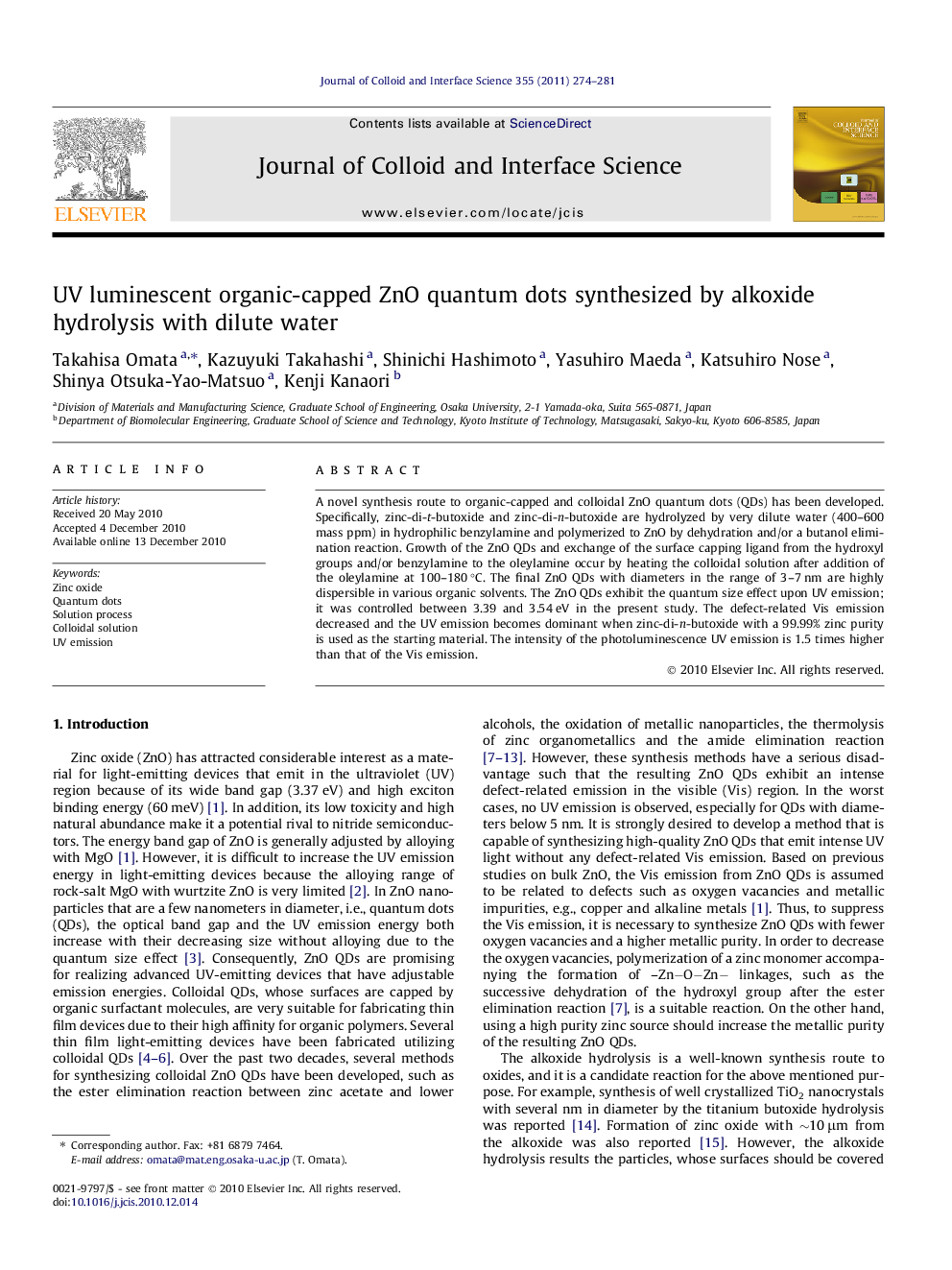| Article ID | Journal | Published Year | Pages | File Type |
|---|---|---|---|---|
| 609056 | Journal of Colloid and Interface Science | 2011 | 8 Pages |
A novel synthesis route to organic-capped and colloidal ZnO quantum dots (QDs) has been developed. Specifically, zinc-di-t-butoxide and zinc-di-n-butoxide are hydrolyzed by very dilute water (400–600 mass ppm) in hydrophilic benzylamine and polymerized to ZnO by dehydration and/or a butanol elimination reaction. Growth of the ZnO QDs and exchange of the surface capping ligand from the hydroxyl groups and/or benzylamine to the oleylamine occur by heating the colloidal solution after addition of the oleylamine at 100–180 °C. The final ZnO QDs with diameters in the range of 3–7 nm are highly dispersible in various organic solvents. The ZnO QDs exhibit the quantum size effect upon UV emission; it was controlled between 3.39 and 3.54 eV in the present study. The defect-related Vis emission decreased and the UV emission becomes dominant when zinc-di-n-butoxide with a 99.99% zinc purity is used as the starting material. The intensity of the photoluminescence UV emission is 1.5 times higher than that of the Vis emission.
Graphical abstractA novel technique to synthesize organic-capped ZnO QDs has been developed. The UV emission intensity is higher than that of the Vis emission and adjustable by the QD size.Figure optionsDownload full-size imageDownload high-quality image (122 K)Download as PowerPoint slideResearch highlights► Organic-capped and colloidal ZnO quantum dots that are dispersible in various organic solvents have been synthesized by alkoxide hydrolysis based reaction and successive surface capping with oleylamine. ► The ZnO quantum dots exhibit quantum size effect on their UV emission. ► The defect-related visible emission that usually appears for the ZnO was highly depressed by using a high purity zinc alkoxide as a starting material.
